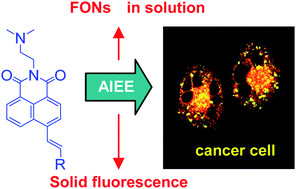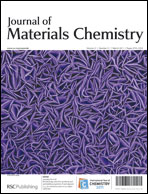Aggregation-induced emission enhancement characteristics of naphthalimide derivatives and their applications in cell imaging†
Abstract
Novel naphthalimide derivatives (NIM) with donor–acceptor architecture were successfully constructed and their unique fluorescent properties were investigated. In particular, the fluorescence intensities of


 Please wait while we load your content...
Please wait while we load your content...